![]()
Paul Gauguin, Landscape in Le Pouldu, 1894
| Artist | Paul Gauguin, French, 1848–1903 |
| Title | Landscape in Le Pouldu |
| Object Date | 1894 |
| Alternate and Variant Titles | Brittany Landscape; Paysage et son chien près d’une barriere; paysage, au premier plan un homme debout devant une barrière |
| Medium | Oil on canvas |
| Dimensions (Unframed) | 36 1/4 x 27 1/2 in. (92.1 x 69.9 cm) |
| Signature | Signed and dated lower left: P. Gauguin. 94 |
| Credit Line | The Nelson-Atkins Museum of Art. Purchase: acquired through the generosity of an anonymous donor, F77-32 |
Catalogue Entry
Citation
Chicago:
Elizabeth C. Childs, “Paul Gauguin, Landscape in Le Pouldu, 1894,” catalogue entry in French Paintings and Pastels, 1600–1945: The Collections of The Nelson-Atkins Museum of Art, ed. Aimee Marcereau DeGalan (Kansas City: The Nelson-Atkins Museum of Art, 2022), https://doi.org/10.37764/78973.5.718.5407.
MLA:
Childs, Elizabeth C. “Paul Gauguin, Landscape in Le Pouldu, 1894,” catalogue entry. French Paintings and Pastels, 1600–1945: The Collections of The Nelson-Atkins Museum of Art, edited by Aimee Marcereau DeGalan, Nelson-Atkins Museum of Art, 2022. doi: 10.37764/78973.5.718.5407.
Between 1891 and 1893, Gauguin took up residence in Tahiti. That period in his career was shaped greatly both by his experience as a privileged French colonial visitor and as a Symbolist artist in search of what to him were novel, tropical subjects not already known by his artistic circle in France. In Tahiti, he remained largely marginalized from the Polynesian culture that he had so idealized from afar. The significant body of art he produced there was informed by his highly individualized perceptions of cross-cultural and gender differences, notions of spiritual mystery, and nostalgia for an allegedly fading Indigenous culture.1For more on this idea, see Elizabeth C. Childs, Vanishing Paradise: Art and Exoticism in Colonial Tahiti (Berkeley: University of California Press, 2013).
In 1893 he returned to France, ready to promote his recent work within the Parisian avant-garde milieu he regarded as his true audience. He exhibited some forty-one of his Tahitian works in Paris in the fall of 1893 and suffered great disappointment when the reaction was mixed and the sales very limited.2The works were shown at the Galeries Durand-Ruel in Paris, November 9–25, 1893. The best study of the critical response to this show remains Karyn Esielonis, “Gauguin’s Tahiti: The Politics of Exoticism” (PhD diss., Harvard University, 1993). Discouraged, he left Paris in April 1894, to return to a rural area where he expected to feel very much at home: Le Pouldu and in Pont-Aven in Brittany, the northwesternmost province of France, where he had worked off and on during the five years before his departure for Polynesia. This time, however, on a visit to Concarneau in May with fellow artists, he fell into a major brawl that left him with a broken leg, in pain and unable to work for two months. The present canvas probably dates to a period of resumed activity in the early fall of 1894, when he was able to once again paint the landscape he so loved before he returned to Paris in November.3A detailed biographical account of this period is found in David Sweetman, Paul Gauguin: A Life (New York: Simon and Schuster, 1996), 387–95.
The vibrant chromatic choices Gauguin used to compose this rural scene suggest early fall foliage, although for Gauguin and other symbolists, color was not always indexical to reality. The ground cover is applied in varying shades of green, but the golden yellow in the land and in the tallest trees, which bear the suggestion of a rustling breeze, draw attention to the coming changes. Livestock grazes in a pasture beyond the fence; at the center of the canvas, a small construction suggests an edifice built for food and/or shelter for the animals. The subject is thus a classic pastoral—an idealized scene of content animals accompanied by a human caretaker in a Breton field. But the intense color, applied to a highly textured support, directs our attention away from the subject (and the geographic locale of Brittany) to the means of painting.
Having recently returned from Tahiti, where he had moved away from the one large town to embrace village life, Gauguin tended to idealize rural settings, especially in contrast to Paris, where he kept a studio at this time. Responding to the ambience of “wildness and primitiveness” he claimed to have discovered in Brittany on previous trips,4See Gauguin’s letter to Émile Schuffenecker, February 1888, translated and quoted in Belinda Thomson, ed., Gauguin by Himself (London: Time Warner Books, 2004), 62. Gauguin chose to work on a rough canvas that resembles coarsely woven burlap. That surface of the support remains assertively visible in several places in this work under the layers of paint.5See accompanying technical entry by Mary Schafer. This is particularly noticeable at the lower left, where a preliminary layer of salmon pink sits directly on top of the canvas. It is in turn occluded by brilliant green strokes, but beneath these vibrant layers, the uneven fabric of the loosely woven cloth breaks through, adding additional texture and movement to the painting’s surface as the eye traverses the painted landscape.
Near the center foreground is a walking man whose banded round hat, workpants patched at the knee, and colorful vest mark him as a local and a worker of the land. He holds a kind of sack, perhaps full of feed for the animals in the pasture he is approaching. Much of his form is outlined in a distinctive blue that emphasizes his singular presence in this countryside. A male dog follows close behind him, and much of its form is outlined in the same dark blue hue. The dog’s conspicuously blue tail demonstrates the liberties Gauguin took with local color, even in this most familiar of subjects.
The dog, so closely aligned in color and form to the man, is a common motif for the artist: a singular dog accompanies humans in many of Gauguin’s works of the period, both in Brittany and in Tahiti.6A very similar animal in profile appears in a Breton work of the same year, Paysage de Bretagne, Le Moulin David (1894; Musée d’Orsay, Paris). In the earlier Tahitian works, a similar dog (albeit red) inhabits the foreground of Gauguin’s Arearea (1892; Musée d’Orsay, Paris). On the one hand, such domesticated animals suggest the harmonious integration of the human and animal worlds, a symbiosis that Gauguin promotes as part of his personal ideal of beauty. But this lone dog, shadowing the one human in the scene, may also serve as a proxy for the artist himself, echoing the presence of the man as a second form of his being and as an instinctual companion to the human world of work and thought referenced by the image of the rural worker. If so, this is a symbiotic relationship, one given to the satisfactions of solitude.
This notion of the sufficiency of isolation and the call of a seemingly “simpler” existence lived out of the city may reflect the artist’s restive period during the summer 1894, when he was both recovering from the unexpected injuries he suffered in Brittany and experiencing acute frustration over the lack of commercial success in his career. It was at this moment that he was making the key decision to remove himself from France once again in search of a different, and distinctive, life as an avant-garde French artist residing in the colonies in Polynesia.7On Gauguin hatching plans from Pont-Aven in late summer 1894 to return to Polynesia, see his letter to William Molard, late August 1894 in Thomson, Gauguin by Himself, 130. He was drawn yet again to a self-imposed exile, intentionally distancing himself from the Parisian world of culture that he knew so well to return to a place that had generated such a productive period in his art.8In August of 1894, he had imagined taking two artist comrades—Armand Seguin and Roderic O’Conor—with him from Pont-Aven to Tahiti, but their plans to accompany him failed to materialize. See Sweetman, Paul Gauguin: A Life, 387–95. In dreaming of a return to Tahiti, he envisioned himself seeking fresh encounters with both the cultural and natural worlds of Oceania, surely taking for granted all of the financial, social, and political advantages that had accrued to him there as a French colonial visitor. For him, Tahiti beckoned again as a place of both relative ease and continuing mystery. It was with this ongoing attraction to highly distinctive natural locales that still promised, in his view, a unique “wildness and primitiveness” that he turned to the scenery at hand in fall 1894.9“I like Brittany, I find a certain wildness and primitiveness here.” Gauguin to Schuffenecker, February 1888, in Thomson, Gauguin by Himself, 62.
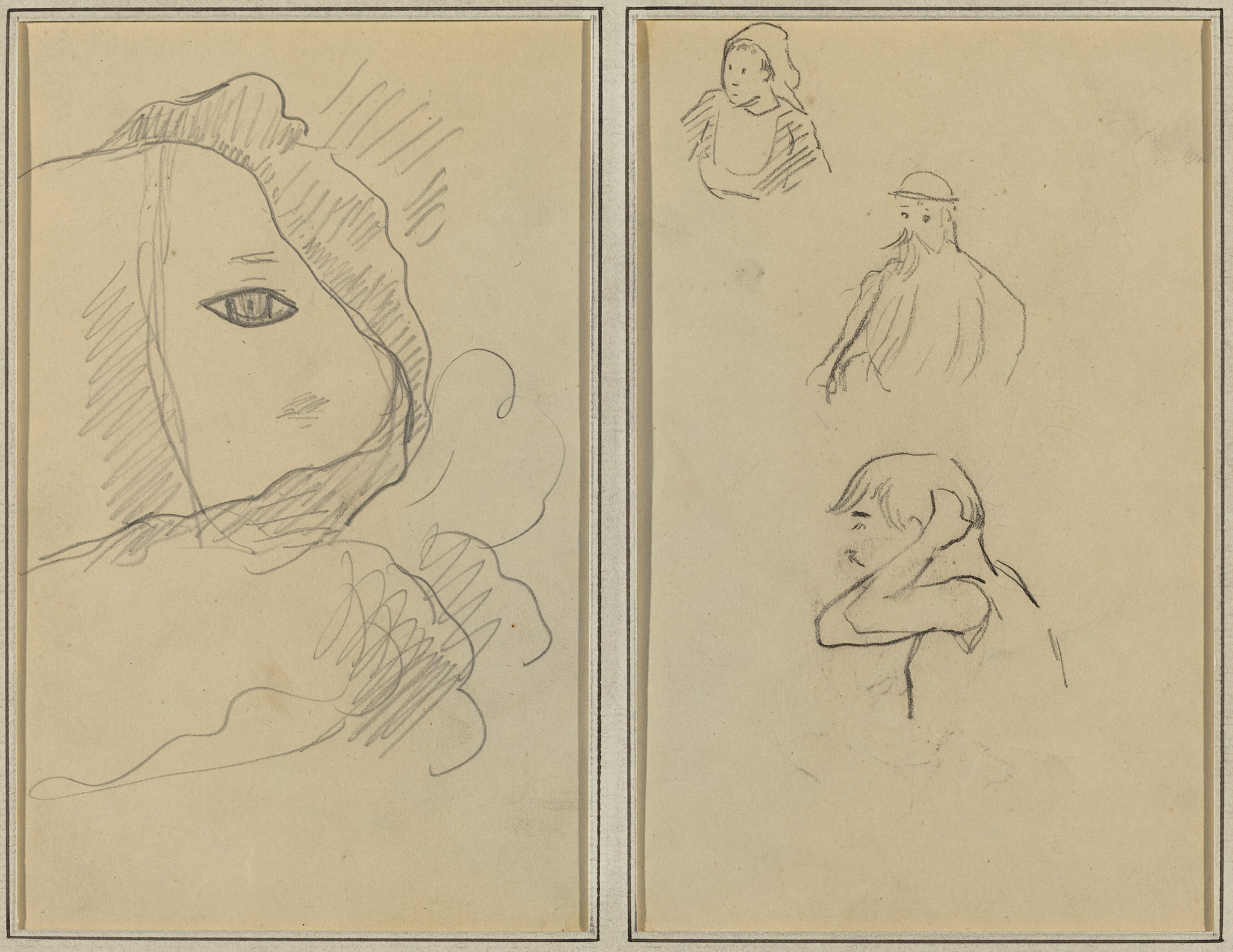 Fig. 2. Paul Gauguin, Eye and Part of Face (verso); A Breton Woman and Two Men (recto), 1884–1888, graphite and crayon on wove paper, 6 5/8 x 8 15/16 in. (16.9 x 22.7 cm), The Armand Hammer Collection, National Gallery of Art, Washington DC, 1991.217.51.a
Fig. 2. Paul Gauguin, Eye and Part of Face (verso); A Breton Woman and Two Men (recto), 1884–1888, graphite and crayon on wove paper, 6 5/8 x 8 15/16 in. (16.9 x 22.7 cm), The Armand Hammer Collection, National Gallery of Art, Washington DC, 1991.217.51.a
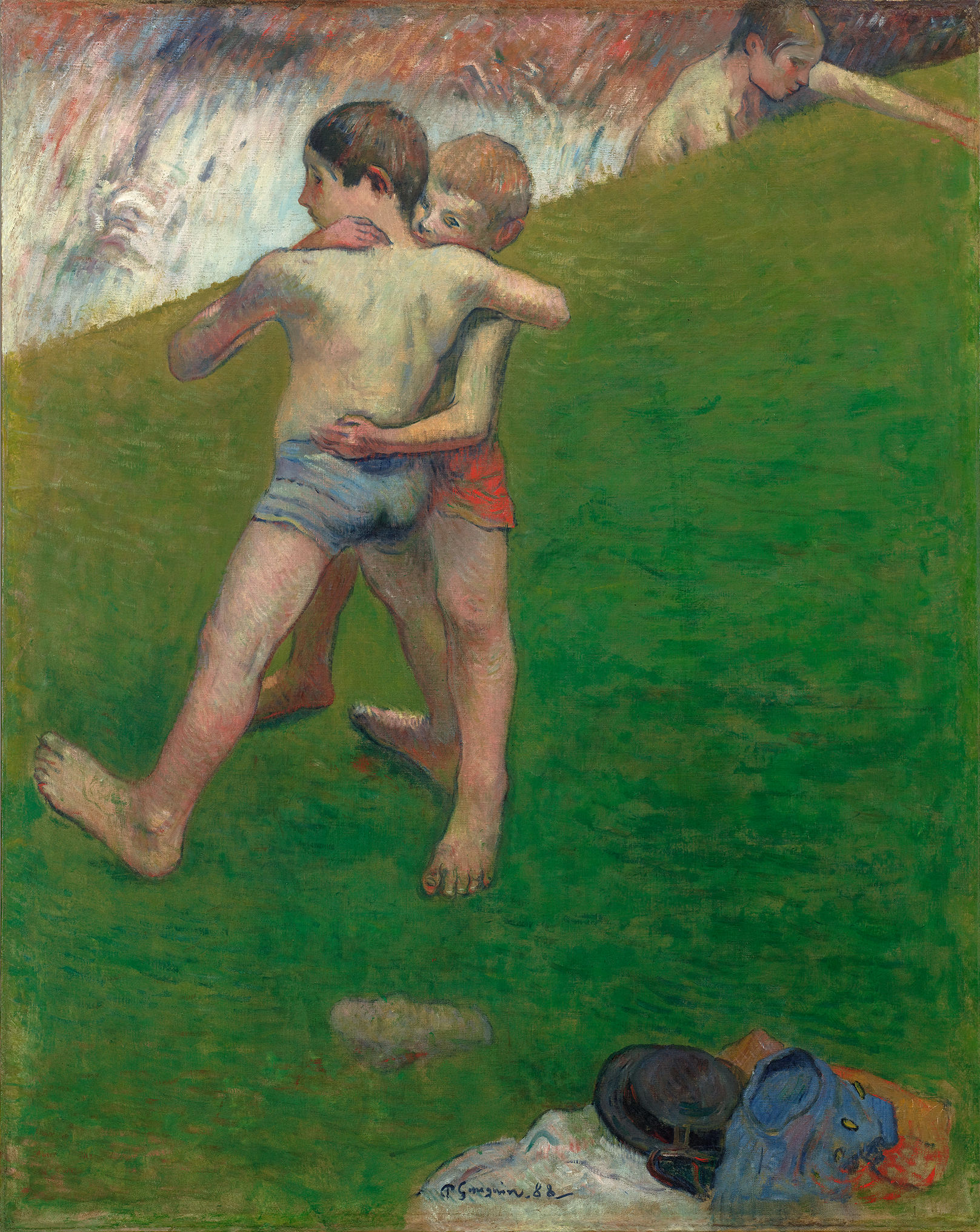 Fig. 3. Paul Gauguin, Children Wrestling, 1888, oil on canvas, 36 7/8 x 28 3/4 in. (93 x 73 cm), Louvre Abu Dhabi, LAD 2010.001
Fig. 3. Paul Gauguin, Children Wrestling, 1888, oil on canvas, 36 7/8 x 28 3/4 in. (93 x 73 cm), Louvre Abu Dhabi, LAD 2010.001
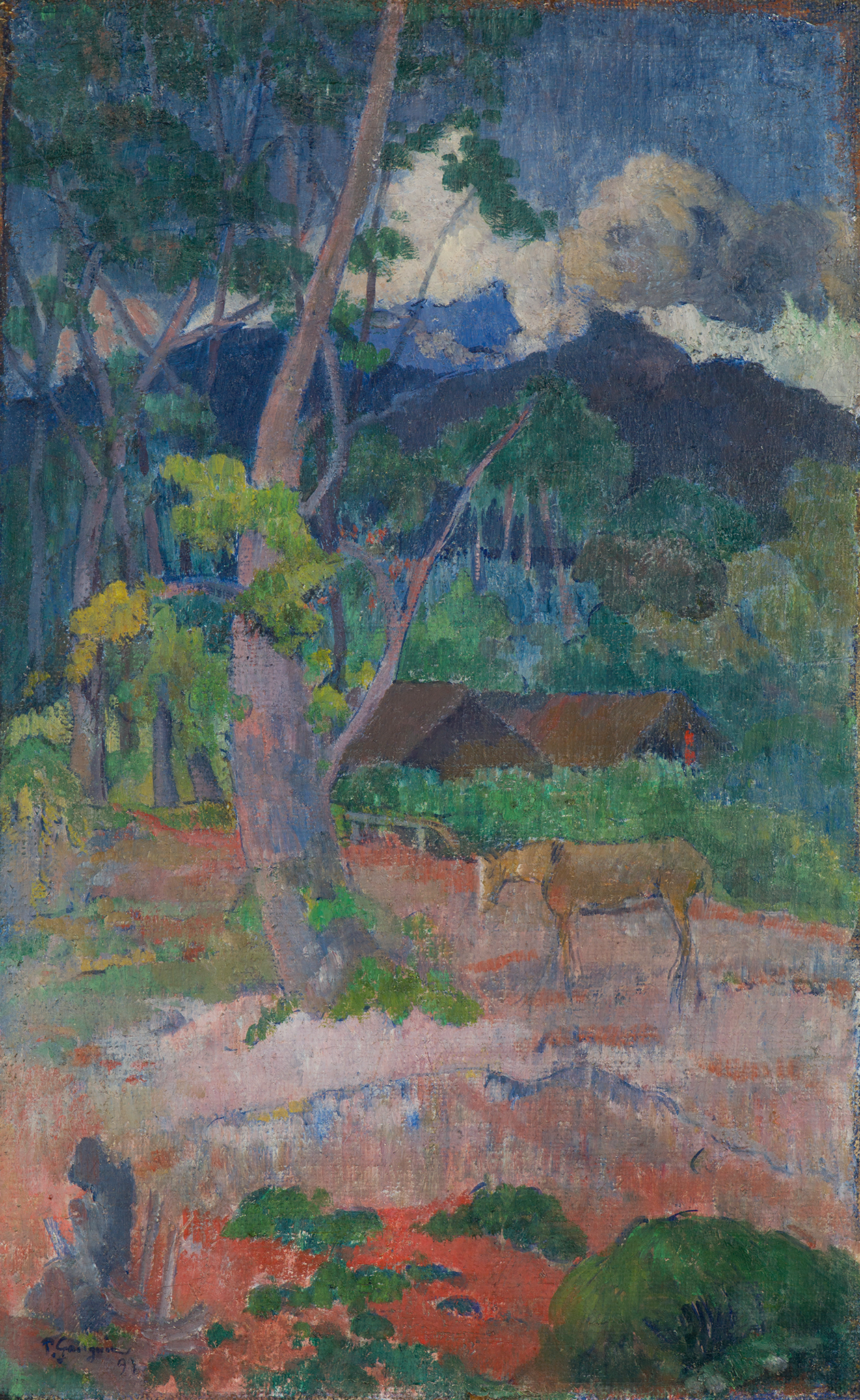
This canvas looks both backward and forward in Gauguin’s career. On the one hand, it repurposes one of his favored motifs of the 1880s: a calm Breton landscape populated by ordinary farm animals and a villager, and yet made more curious and stimulating by the presence of such unique features as the physiognomic rocks. But Gauguin’s sojourn to Brittany in 1894 also offered him the chance to explore new physical aspects of his materials, such as the effects of layered oil paint over coarsely woven, demandingly textured supports. He repeated these experiments from Brittany when, several years later and halfway around the globe, he produced more pastoral scenes for the Parisian art market, albeit now in his favored Tahitian idiom. Here again, the robust surface of a crude and bumpy cloth under diverse applications of paint actively demands the viewer’s attention, inviting the movement of the eye across insistent surfaces as we encounter the quietude of a lush landscape inhabited by only a very few beings. Such a fusion of disparate experiences—of motion and of quiet, of the disruptive roughness of the support with the coherence of a still, composed scene—characterizes the dualism of many of Gauguin’s landscapes. In works such as this, Gauguin’s compelling and illusory imagery competes with the insistent materiality of the object itself. The viewer, then and now, is called to attend to both.
Notes
-
For more on this idea, see Elizabeth C. Childs, Vanishing Paradise: Art and Exoticism in Colonial Tahiti (Berkeley: University of California Press, 2013).
-
The works were shown at the Galeries Durand-Ruel in Paris, November 9–25, 1893. The best study of the critical response to this show remains Karyn Esielonis, “Gauguin’s Tahiti: The Politics of Exoticism” (PhD diss., Harvard University, 1993).
-
A detailed biographical account of this period is found in David Sweetman, Paul Gauguin: A Life (New York: Simon and Schuster, 1996), 387–95.
-
See Gauguin’s letter to Emile Schuffenecker, February 1888, translated and quoted in Belinda Thomson, ed., Gauguin by Himself (London: Time Warner Books, 2004), 62.
-
See accompanying technical entry by Mary Schafer.
-
A very similar animal in profile appears in a Breton work of the same year, Paysage de Bretagne, Le Moulin David (1894; Musée d’Orsay, Paris). In the earlier Tahitian works, a similar dog (albeit red) inhabits the foreground of Gauguin’s Arearea (1892; Musée d’Orsay, Paris).
-
On Gauguin hatching plans from Pont-Aven in late summer 1894 to return to Polynesia, see his letter to William Molard, late August 1894 in Thomson, Gauguin by Himself, 130.
-
In August of 1894, he had imagined taking two artist comrades—Armand Seguin and Roderic O’Conor—with him from Pont-Aven to Tahiti, but their plans to accompany him failed to materialize. See Sweetman, Paul Gauguin: A Life, 387–95.
-
“I like Brittany, I find a certain wildness and primitiveness here.” Gauguin to Schuffenecker, February 1888, in Thomson, Gauguin by Himself, 62.
-
For more on the Celtic influence in Gauguin’s work, see Griselda Pollock and Fred Orton, “Les Donées Bretonnantes/La Prairie de la Répresentation,” Art History 3, no. 3 (September 1980): 314–44.
-
One example of Gauguin’s work from the later 1880s that introduces an anthropomorphic form into the landscape is Arlésiennes (Mistral) (late 1888–1889; Art Institute of Chicago). Here, in the large bush in the left foreground, appear details of a monstrous face with discernible eyes, nose, and moustache; the figure is understood by some as an embedded self-portrait of the artist. See Douglas Druick and Peter Zegers, “Gauguin Cat. 10, Arlésiennes (Mistral)—1934.391: Descriptive Analysis,” in Gauguin Paintings, Sculpture, and Graphic Works at the Art Institute of Chicago, ed. Gloria Groom and Genevieve Westerby (Art Institute of Chicago, 2016), para 4, https://publications.artic.edu/gauguin/reader/ gauguinart/section/140235. On this general phenomenon in Gauguin’s art, see Dario Gamboni, Paul Gauguin: The Mysterious Center of Thought (London: Reaktion Books, 2013), esp. chapter 3, “You Are What You See.”
-
This notably occurs in the rocky background of the waterfall in Pape Moe (Mysterious Waters) (1893; private collection, Zurich, Switzerland).
-
Gauguin to Schuffenecker, August 14, 1888: “Un conseil, ne copiez pas trop d’après nature. L’art est une abstraction: tirez-la de la nature en rêvant devant et pensez plus à la création qu’au résultat.” In Victor Merlhès, Correspondance de Paul Gauguin: Documents, Témoignages (Paris: Foundation Singer-Polignac, 1984), 172, letter 159.
-
See Suzanne Diffre and Marie-Josèphe Lesieur, “Gauguin in the Vollard Archives,” in George Shackelford and Claire Frèsches-Thory, eds., Gauguin Tahiti, exh. cat. (Boston: Museum of Fine Arts, 2004), 305–11.
-
In 1900, George-Daniel de Monfreid (1856–1929) sold, on consignment to Vollard, Gauguin’s Tahitian work Landscape with Horse, 1899, oil on burlap (Saint Louis Art Museum). On the provenance of this work, see “Petit paysage avec un cheval, 1889,” in Gauguin: Catalogue Raisonné of the Paintings 1891–1903, ed. Daniel Wildenstein, Sylvie Crussard, and Richard R. Brettell (New York: Wildenstein-Plattner Institute, 2020), accessed March 20, 2022, https://digitalprojects.wpi.art/artworks/gauguin/detail/71761-petit-paysage-avec-un-cheval?all=landscape%20with%20hors.
Technical Entry
Citation
Chicago:
Mary Schafer, “Paul Gauguin, Landscape in Le Pouldu, 1894,” technical entry in French Paintings and Pastels, 1600–1945: The Collections of The Nelson-Atkins Museum of Art, ed. Aimee Marcereau DeGalan (Kansas City: The Nelson-Atkins Museum of Art, 2022), https://doi.org/10.37764/78973.5.718.2088.
MLA:
Schafer, Mary. “Paul Gauguin, Landscape in Le Pouldu, 1894,” technical entry. French Paintings and Pastels, 1600–1945: The Collections of The Nelson-Atkins Museum of Art, edited by Aimee Marcereau DeGalan, Nelson-Atkins Museum of Art, 2022. doi: 10.37764/78973.5.718.2088.
During his brief return to Brittany in 1894, Paul Gauguin painted Landscape in Le Pouldu on a fairly open, plain-weaveplain weave: A basic textile weave in which one weft thread alternates over and under the warp threads. Often this structure consists of one thread in each direction, but threads can be doubled (basket weave) or tripled to create more complex plain weave. Plain weave is sometimes called tabby weave. canvas that resembles the coarsely woven structure of burlap. Although the dimensions of the painting are close in size to that of a standard-formatstandard-format supports: Commercially prepared supports available through art suppliers, which gained popularity in the nineteenth century during the industrialization of art materials. Available in three formats figure (portrait), paysage (landscape), and marine (marine), these were numbered 1 through 120 to indicate their size. For each numbered size, marine and paysage had two options available: a larger format (haute) and smaller (basse) format. no. 30 figure canvas,1David Bomford, Jo Kirby, John Leighton, and Ashok Roy, Art in the Making: Impressionism (London: Yale University Press, 1991), 45. it is unclear if the six-member stretcherstretcher: A wooden structure to which the painting’s canvas is attached. Unlike strainers, stretchers can be expanded slightly at the joints to improve canvas tension and avoid sagging due to humidity changes or aging., estimated to be pine with mortise-and-tenon joinery, is original.2Although there is little documentation available on the artist’s stretchers, two potential original stretchers—Haystacks (1889; Courtauld Institute of Art) and The Invocation (1903; National Gallery of Art, Washington, DC)—are described as “rather thin five-member pine specimens, with butt joins.” Charlotte Hale, “A Study of Paul Gauguin’s Correspondence Relating to His Painting Materials and Techniques, with Specific Reference to His Works in the Courtauld Collection” (Third Year Project, The Courtauld Institute of Art, 1982), 28, cited in Carol Christensen, “The Painting Materials and Techniques of Paul Gauguin,” Studies in the History of Art 41 (1993): 88. The artist applied, white groundground layer: An opaque preparatory layer applied to the support, either commercially or by the artist, to prevent absorption of the paint into the canvas or panel. See also priming layer. does not continue onto the tacking marginstacking margins: The outer edges of canvas that wrap around and are attached to the stretcher or strainer with tacks or staples. See also tacking edge., and its somewhat porous, granular appearance is consistent with the chalk-glue grounds that Gauguin favored (Fig. 5).3Christensen, “The Painting Materials and Technique of Paul Gauguin,” 71. See also Vojtěch Jirat-Wasiutyński and H. Travers Newton, Technique and Meaning in the Paintings of Paul Gauguin (Cambridge: Cambridge University Press, 2000), 53. To date, no analysis of the Nelson-Atkins painting has been undertaken. The thin application of the ground layer allows the coarse canvas, with its pronounced horizontal threads, numerous weave irregularities, and strong cuspingcusping: A scalloped pattern along the canvas edges that relates to how the canvas was stretched. Primary cusping reveals where tacks secured the canvas to the support while the ground layer was applied. Secondary cusping can form when a pre-primed canvas is re-stretched by the artist prior to painting. at all four edges, to become the prevailing texture across the landscape (Fig. 6).4Gauguin used the coarse canvas to create a dry, textural effect that gave his paintings a “rough, primitivizing appearance.” See Jirat-Wasiutyński and Newton, Technique and Meaning in the Paintings of Paul Gauguin, 116–17.
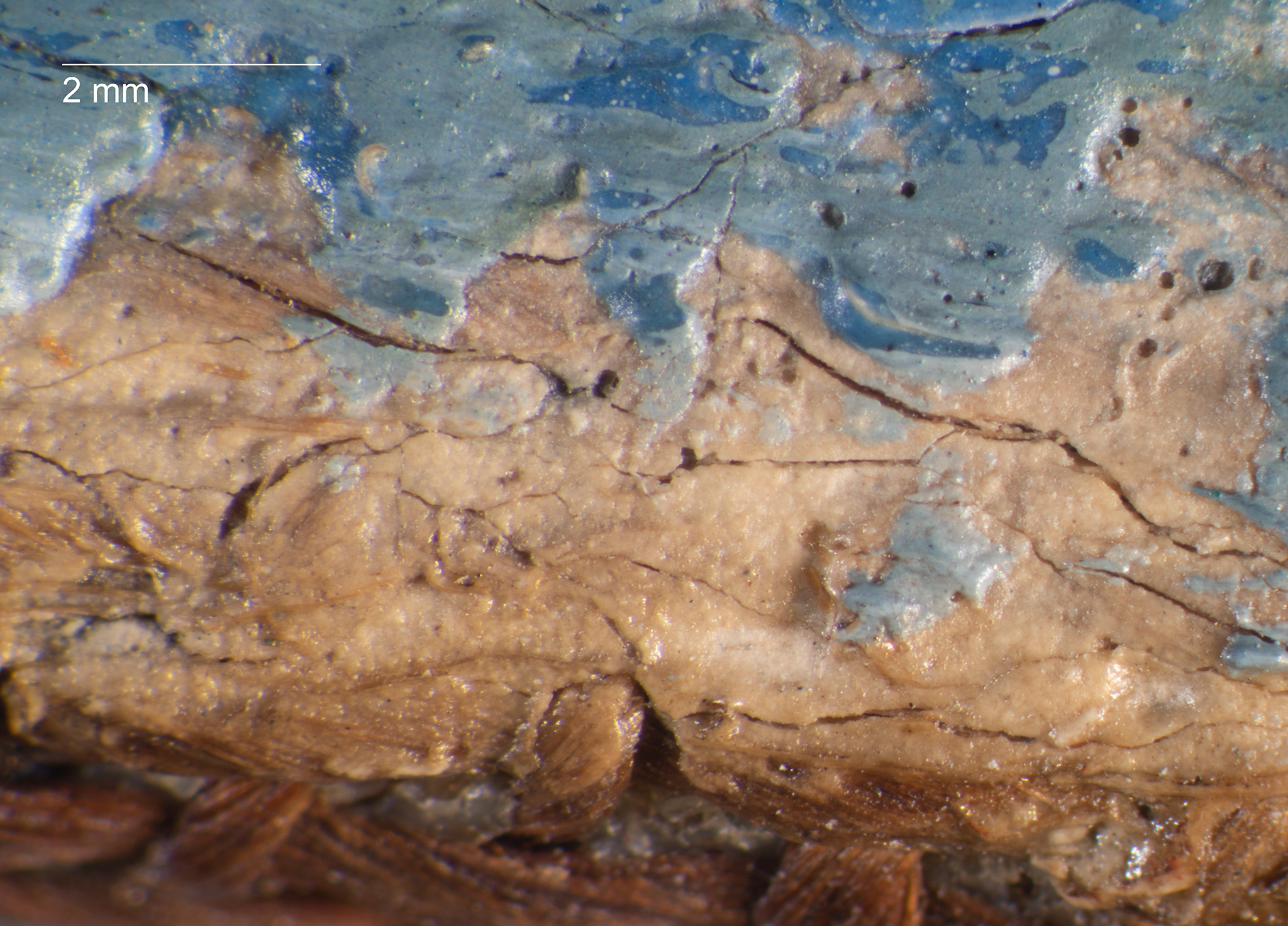 Fig. 5. Photomicrograph of Landscape in Le Pouldu (1894), showing the granular appearance of the white ground
Fig. 5. Photomicrograph of Landscape in Le Pouldu (1894), showing the granular appearance of the white ground
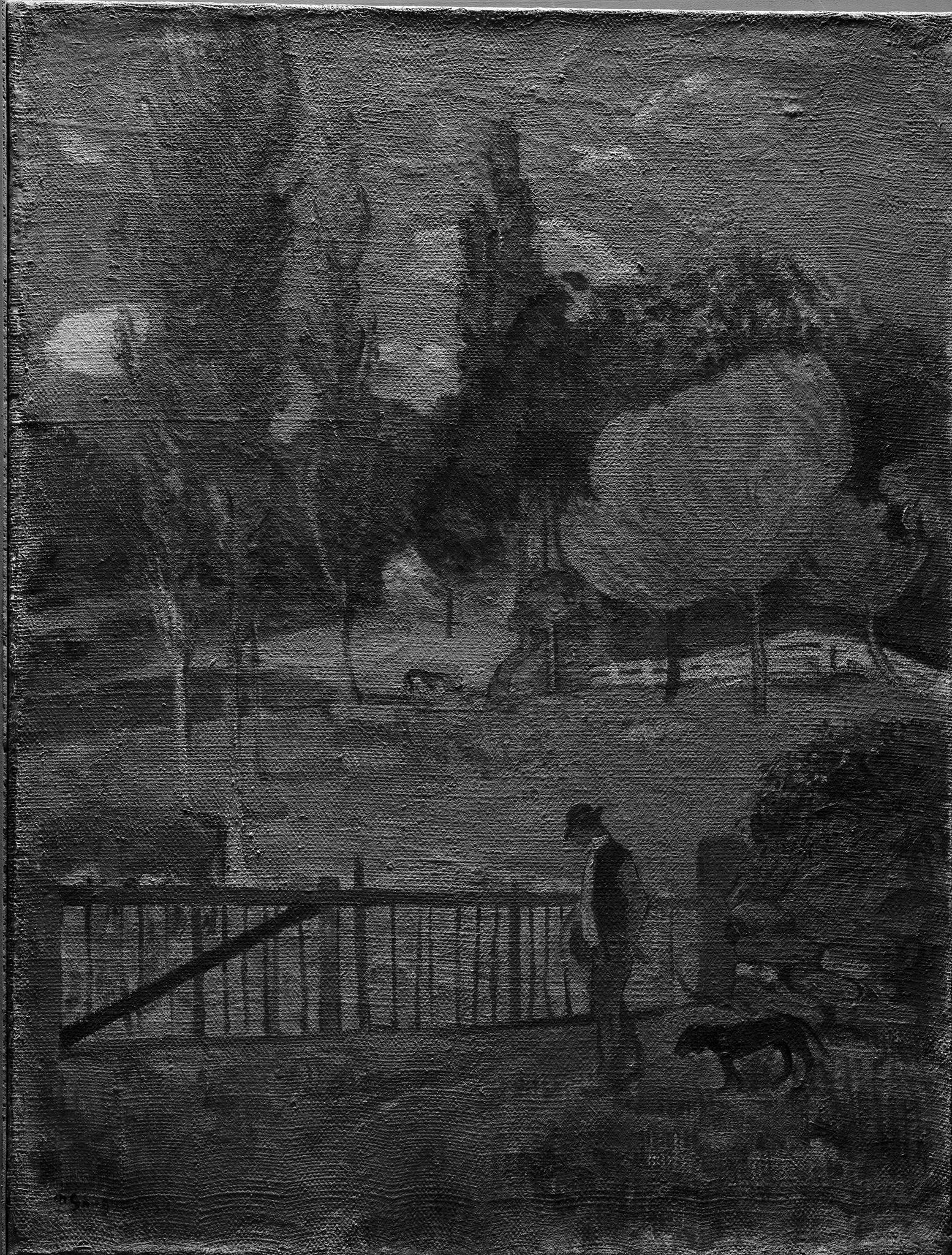 Fig. 6. Raking illumination photograph of Landscape in Le Pouldu (1894)
Fig. 6. Raking illumination photograph of Landscape in Le Pouldu (1894)
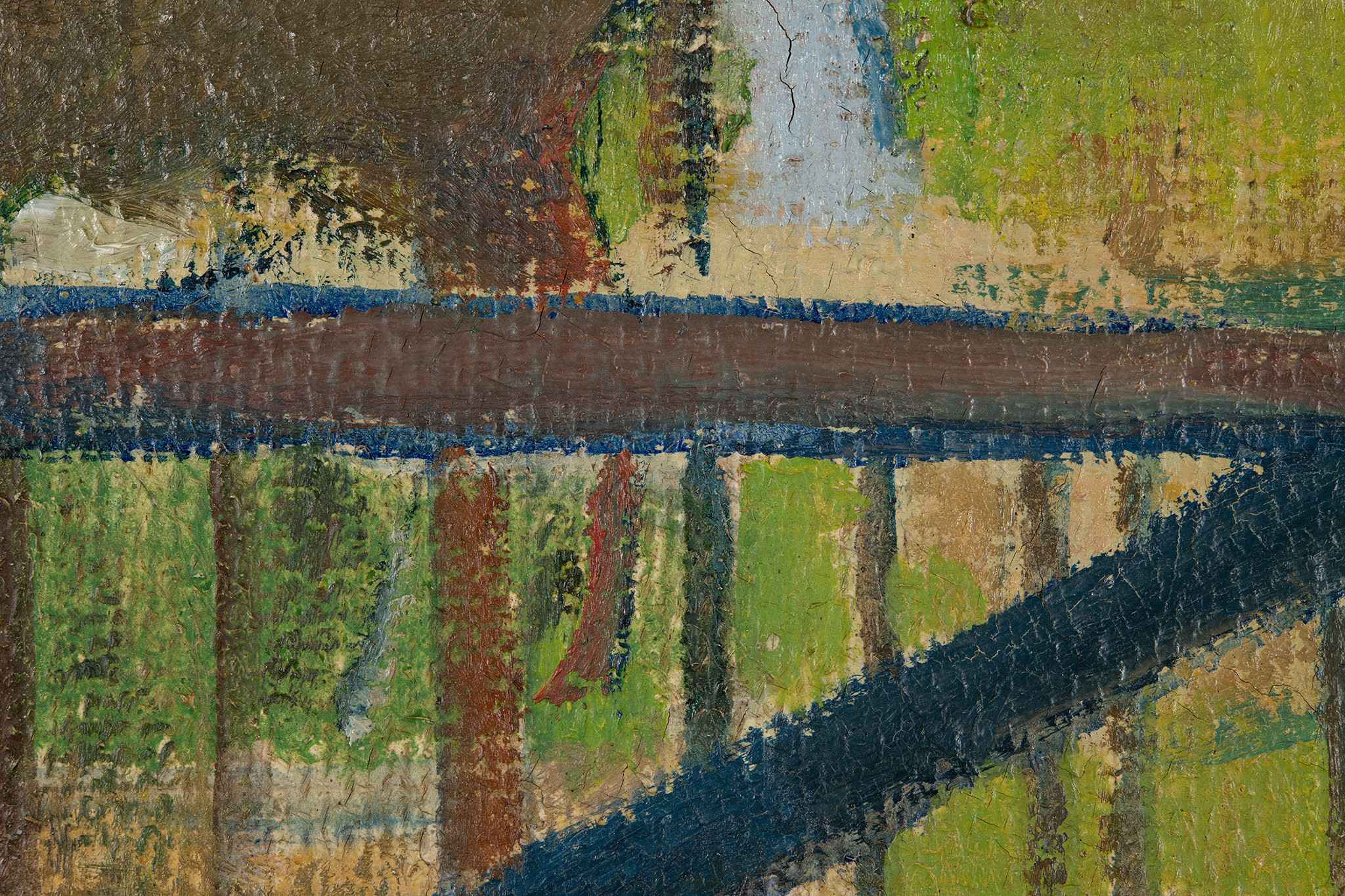 Fig. 7. Detail of Landscape in Le Pouldu (1894), revealing the blue painted lines of the preliminary underdrawing
Fig. 7. Detail of Landscape in Le Pouldu (1894), revealing the blue painted lines of the preliminary underdrawing
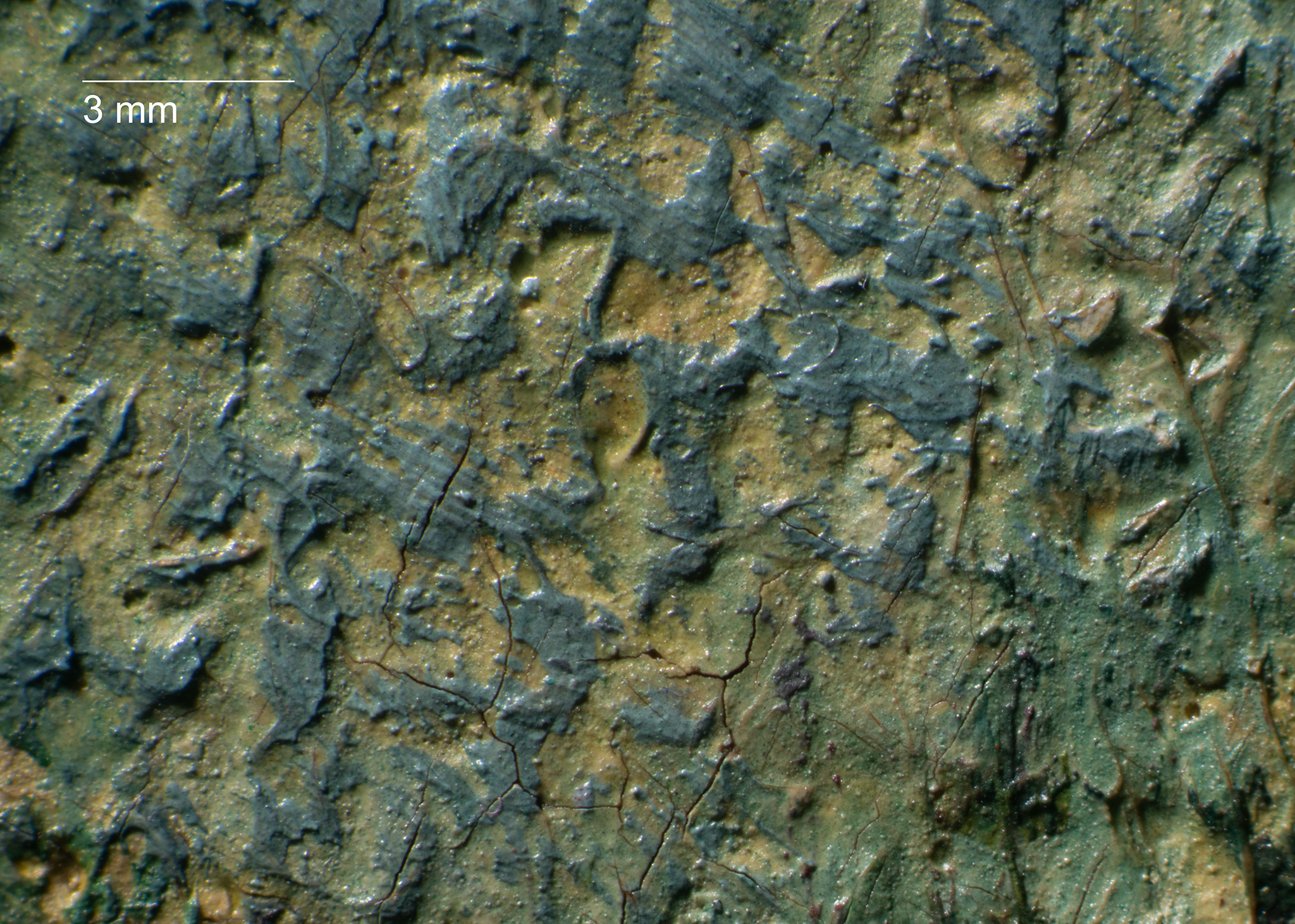 Fig. 8. Photomicrograph with slightly raking illumination, Landscape in Le Pouldu (1894), showing the green wash beneath the upper right tree
Fig. 8. Photomicrograph with slightly raking illumination, Landscape in Le Pouldu (1894), showing the green wash beneath the upper right tree
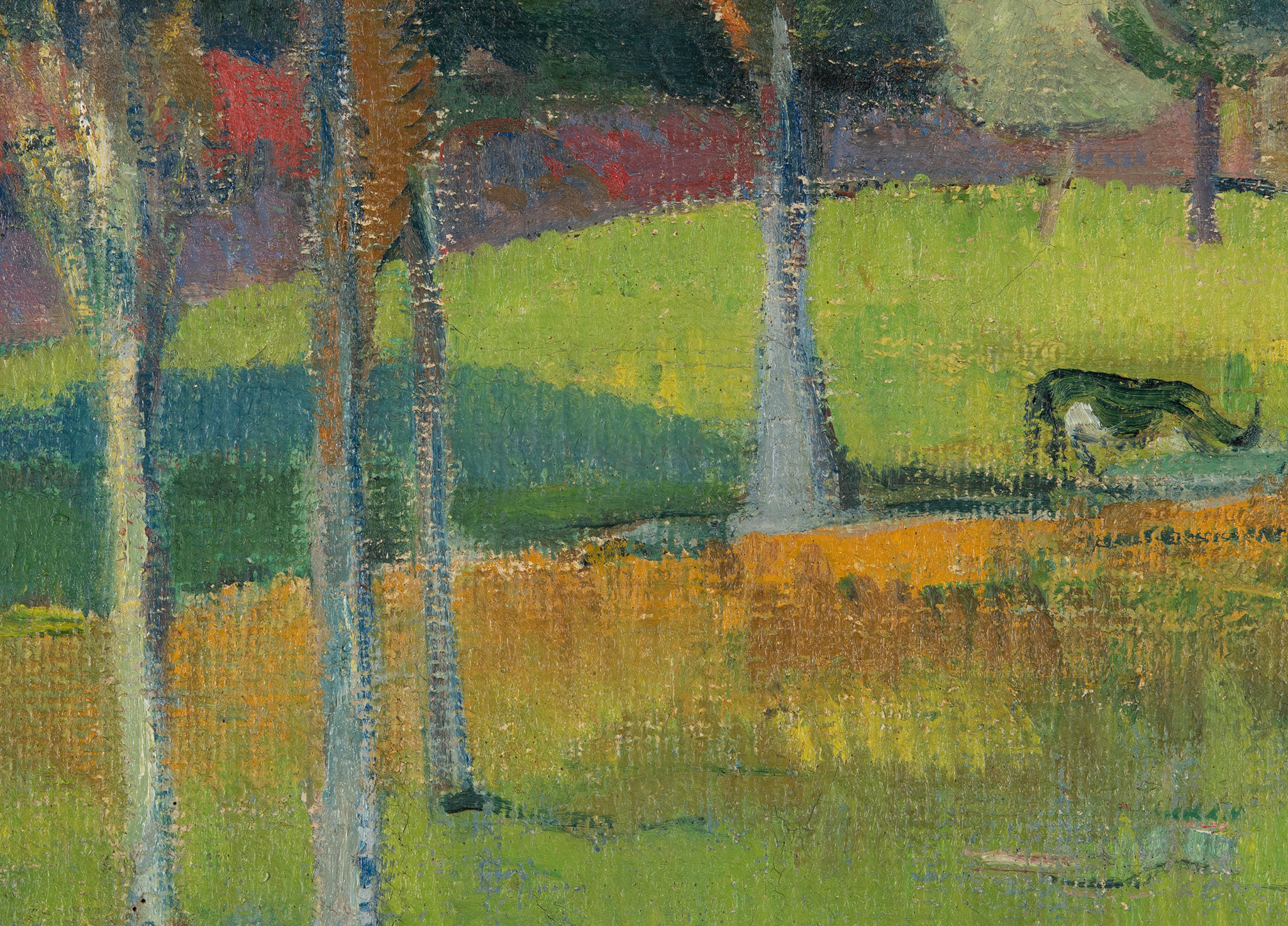 Fig. 9. Detail of Landscape in Le Pouldu (1894), showing Gauguin’s use of parallel, vertical brushstrokes
Fig. 9. Detail of Landscape in Le Pouldu (1894), showing Gauguin’s use of parallel, vertical brushstrokes
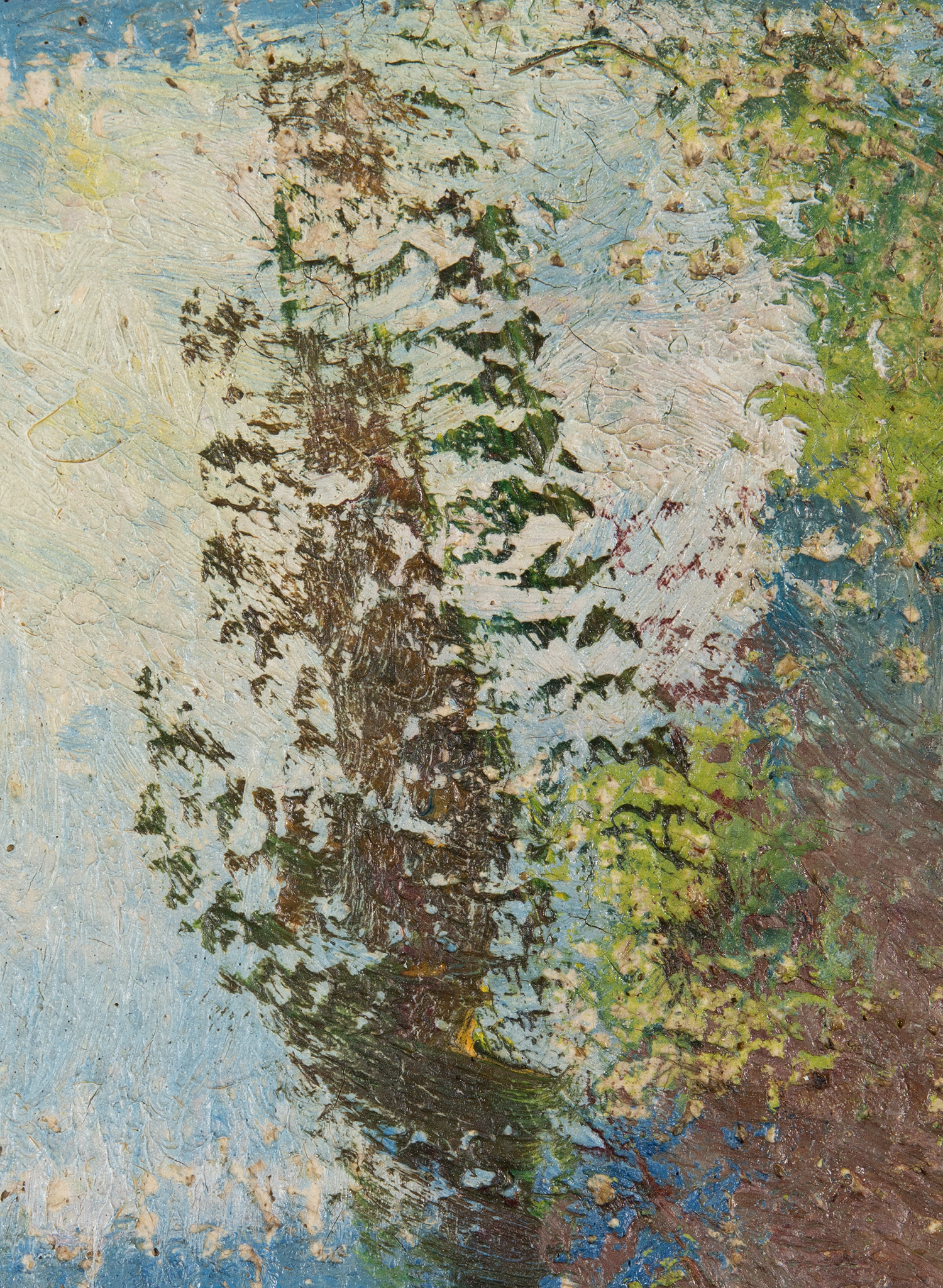 Fig. 10. Detail of wet-over-dry brushwork in the trees of Landscape in Le Pouldu (1894)
Fig. 10. Detail of wet-over-dry brushwork in the trees of Landscape in Le Pouldu (1894)
 Fig. 11. Photomicrograph of the distant cow in Landscape in Le Pouldu (1894), painted wet-over-wet on top of the already dry paint of the green field
Fig. 11. Photomicrograph of the distant cow in Landscape in Le Pouldu (1894), painted wet-over-wet on top of the already dry paint of the green field
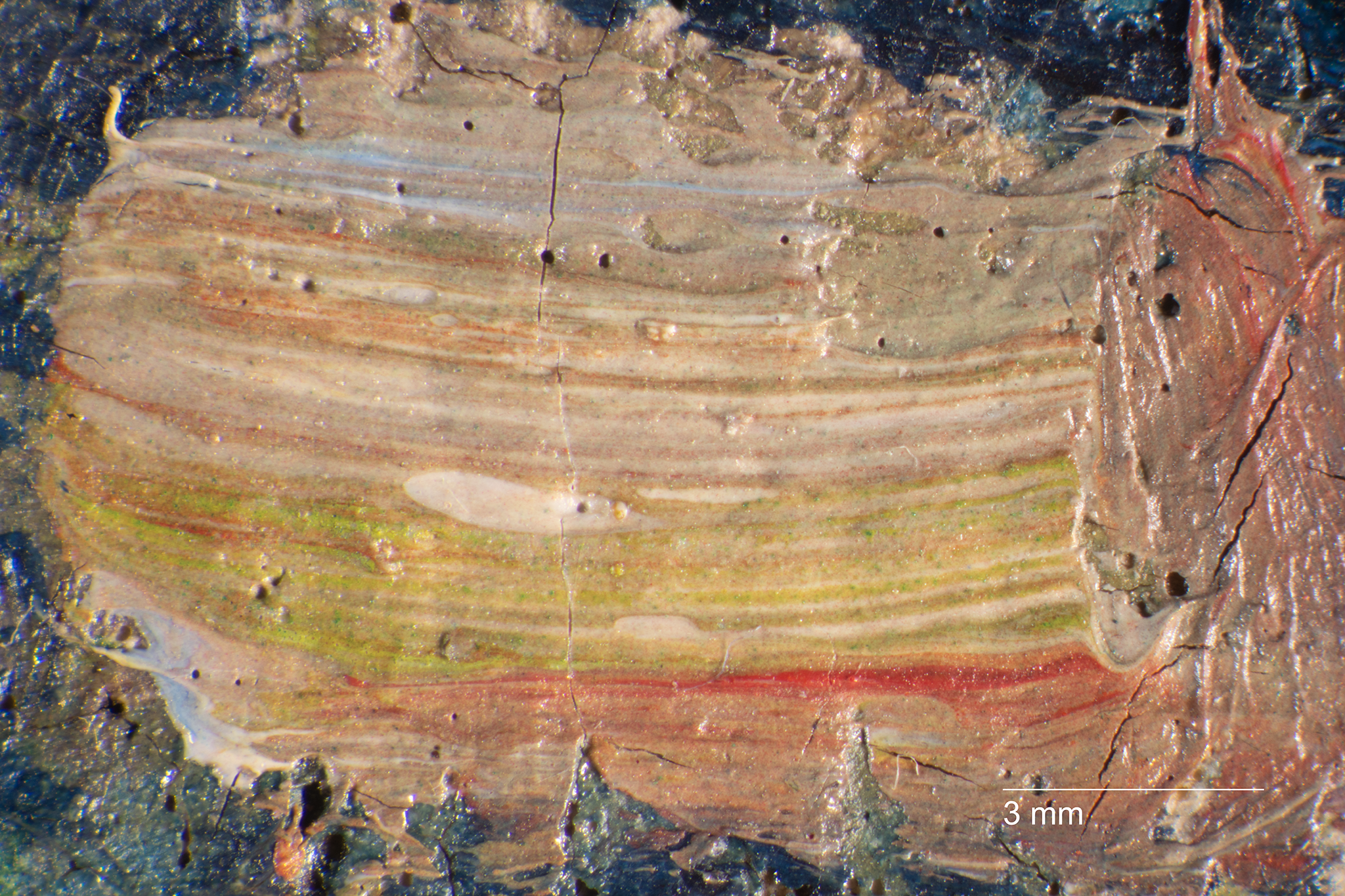 Fig. 12. Photomicrograph of Landscape in Le Pouldu (1894), revealing the partially mixed colors of a single horizontal stroke, located at the base of the stone wall
Fig. 12. Photomicrograph of Landscape in Le Pouldu (1894), revealing the partially mixed colors of a single horizontal stroke, located at the base of the stone wall
 Fig. 13. Detail of Landscape in Le Pouldu (1894), showing the additions of bright blue paint to the sky
Fig. 13. Detail of Landscape in Le Pouldu (1894), showing the additions of bright blue paint to the sky
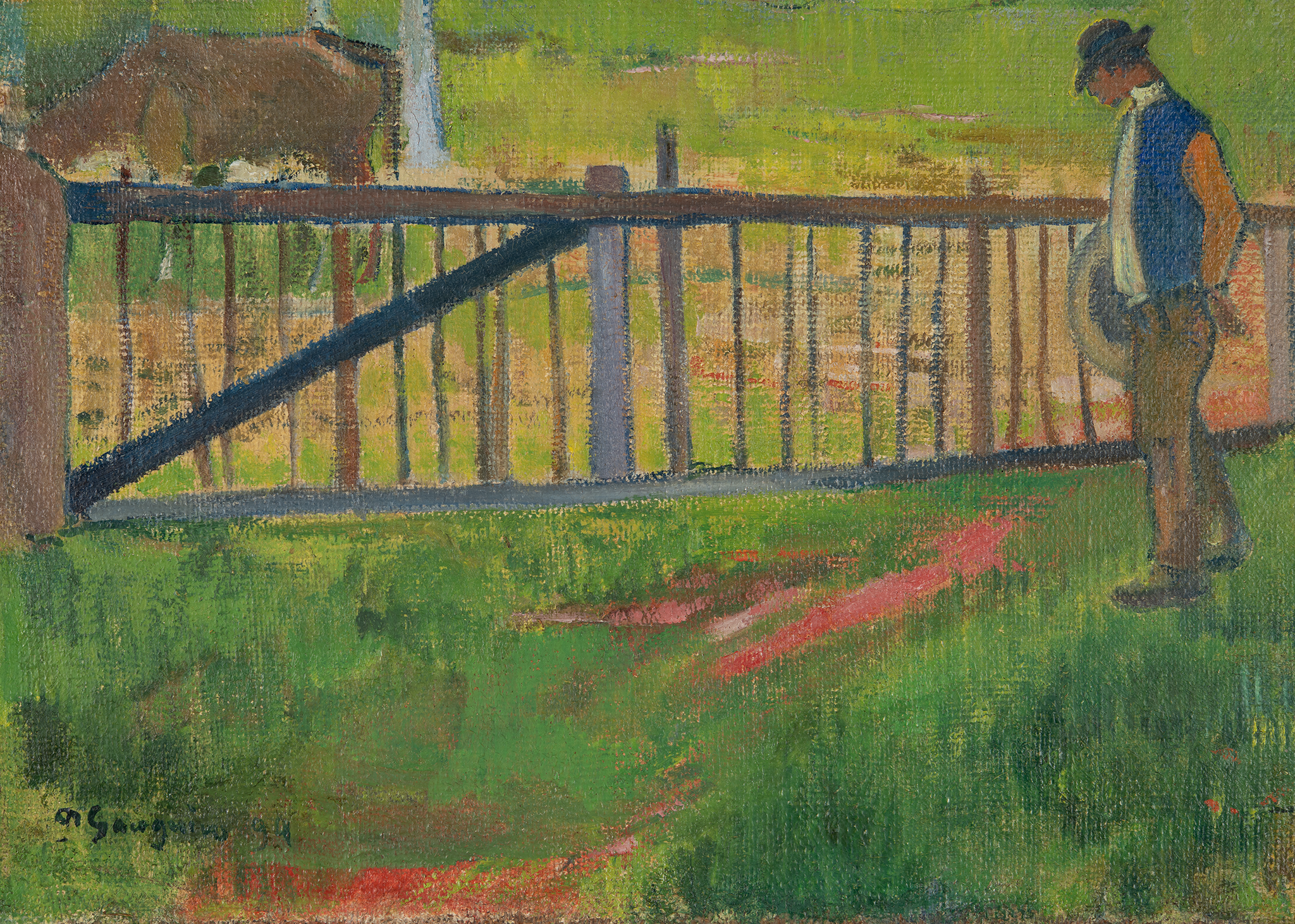 Fig. 14. Detail of the foreground, Landscape in Le Pouldu (1894)
Fig. 14. Detail of the foreground, Landscape in Le Pouldu (1894)
A rectangular shape, approximately five by two centimeters, is present at the center left edge, formed where the upper paint layers stop short of the painting’s edge, as if an easel clamp or other barrier covered the area during a later stage of painting (Fig. 16). Its off-center location is curious, and there is no matching feature on the opposite edge.
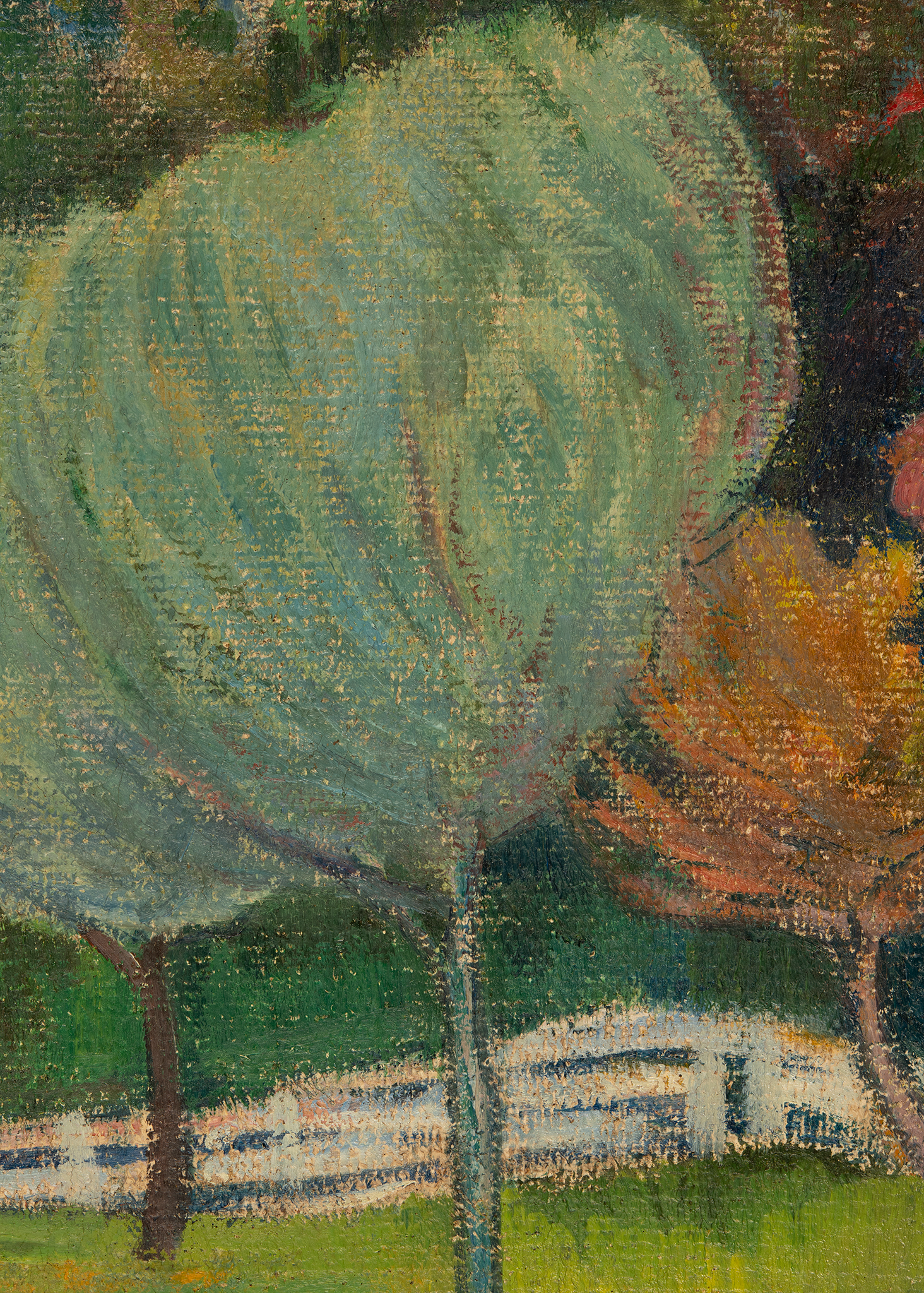 Fig. 15. Detail of the red-purple strokes on the right edge of the pale green tree at center right, Landscape in Le Pouldu (1894)
Fig. 15. Detail of the red-purple strokes on the right edge of the pale green tree at center right, Landscape in Le Pouldu (1894)
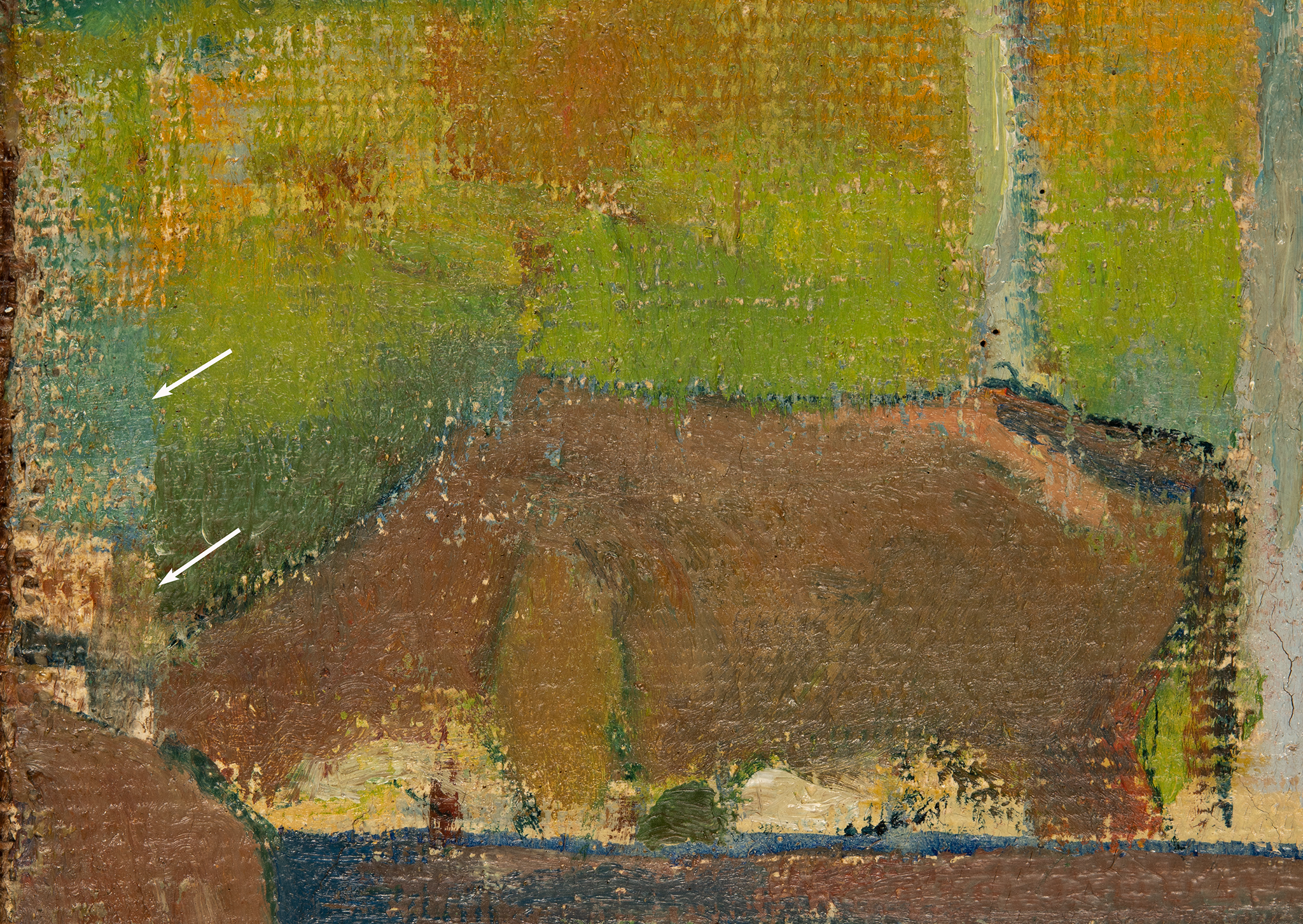 Fig. 16. Detail of the lower left edge, Landscape in Le Pouldu (1894). Arrows mark the edge of the vertical shape where the upper paint layers abruptly end.
Fig. 16. Detail of the lower left edge, Landscape in Le Pouldu (1894). Arrows mark the edge of the vertical shape where the upper paint layers abruptly end.
Notes
-
David Bomford, Jo Kirby, John Leighton, and Ashok Roy, Art in the Making: Impressionism (London: Yale University Press, 1991), 45.
-
Although there is little documentation available on the artist’s stretchers, two potential original stretchers—Haystacks (1889; Courtauld Institute of Art) and The Invocation (1903; National Gallery of Art, Washington, DC)—are described as “rather thin five-member pine specimens, with butt joins.” Charlotte Hale, “A Study of Paul Gauguin’s Correspondence Relating to His Painting Materials and Techniques, with Specific Reference to His Works in the Courtauld Collection” (Third Year Project, The Courtauld Institute of Art, 1982), 28, cited in Carol Christensen, “The Painting Materials and Techniques of Paul Gauguin,” Studies in the History of Art 41 (1993): 88.
-
Christensen, “The Painting Materials and Technique of Paul Gauguin,” 71. See also Vojtěch Jirat-Wasiutyński and H. Travers Newton, Technique and Meaning in the Paintings of Paul Gauguin (Cambridge: Cambridge University Press, 2000), 53. To date, no analysis of the Nelson-Atkins painting has been undertaken.
-
Gauguin used the coarse canvas to create a dry, textural effect that gave his paintings a “rough, primitivizing appearance.” See Jirat-Wasiutyński and Newton, Technique and Meaning in the Paintings of Paul Gauguin, 116–17.
-
A similar construction is evident beneath the paint layers of Faaturuma (Melancholic) (1891) and Autumn in Brittany (The Willow Tree) (1889). See the technical entries by Mary Schafer for “Paul Gauguin, Faaturuma (Melancholic), 1891,” and “Paul Gauguin, Autumn in Brittany (The Willow Tree), 1889,” in this catalogue, https://doi.org/10.37764/78973.5.716.2088 and https://doi.org/10.37764/78973.5.714.2088.
-
Christensen, “The Painting Materials and Technique of Paul Gauguin,” 75.
-
Forrest Bailey, September 11, 1986, treatment report, Nelson-Atkins conservation file, no. F77-32.
-
Mary Schafer, October 5, 2005, treatment report, Nelson-Atkins conservation file, no. F77-32.
-
Christensen, “The Painting Materials and Technique of Paul Gauguin,” 92.
Documentation
Citation
Chicago:
Glynnis Napier Stevenson, “Paul Gauguin, Landscape in Le Pouldu, 1894,” documentation in French Paintings and Pastels, 1600–1945: The Collections of The Nelson-Atkins Museum of Art, ed. Aimee Marcereau DeGalan (Kansas City: The Nelson-Atkins Museum of Art, 2022), https://doi.org/10.37764/78973.5.718.4033.
MLA:
Stevenson, Glynnis Napier. “Paul Gauguin, Landscape in Le Pouldu, 1894,” documentation. French Paintings and Pastels, 1600–1945: The Collections of The Nelson-Atkins Museum of Art, edited by Aimee Marcereau DeGalan, Nelson-Atkins Museum of Art, 2022. doi: 10.37764/78973.5.718.4033.
Provenance
Citation
Chicago:
Glynnis Napier Stevenson, “Paul Gauguin, Landscape in Le Pouldu, 1894,” documentation in French Paintings and Pastels, 1600–1945: The Collections of The Nelson-Atkins Museum of Art, ed. Aimee Marcereau DeGalan (Kansas City: The Nelson-Atkins Museum of Art, 2022), https://doi.org/10.37764/78973.5.718.4033.
MLA:
Stevenson, Glynnis Napier. “Paul Gauguin, Landscape in Le Pouldu, 1894,” documentation. French Paintings and Pastels, 1600–1945: The Collections of The Nelson-Atkins Museum of Art, edited by Aimee Marcereau DeGalan, Nelson-Atkins Museum of Art, 2022. doi: 10.37764/78973.5.718.4033.
Consigned by the artist to Georges Chaudet (1870–1899), Paris, by June 1895–no later than September 1899 [1];
Purchased from Chaudet by Ambroise Vollard, Paris, Stockbook A, no. 3958, as paysage; au premier plan un homme debout devant une barrière, by September 1899–1900 [2];
Exchanged between Vollard and Bernheim-Jeune et Cie, Paris, April 3, 1900 [3];
Auguste Pellerin (1853–1929), Paris, by May 6, 1907;
Exchanged between Pellerin and Ambroise Vollard, Paris, May 6, 1907 [4];
Acquired from Vollard by Gabriel Frizeau (1870–1938), Bordeaux, December 21, 1908 at the earliest [5];
Possibly purchased from Frizeau, either through André Lhote, by Galerie Vildrac, Paris, by June 26, 1913, or through Ary Leblond, by Jos Hessel, 26, rue la Boetié, Paris, by April 1, 1921 [6];
Juliette Lecomte (née Pellerin, 1893–1987), Neuilly-sur-Seine, France, by June 8, 1956;
Purchased from her sale, Important Ensemble de Tableaux Modernes: quatre peintures et trois aquarelles par Paul Cézanne; Œuvres de Boudin, Bonnard, Corot, Degas, Dufy, Gauguin, Jongkind, Monet, Renoir, Segonzac, Toulouse-Lautrec, Utrillo, Vuillard, provenant pour la plupart d’une grande collection parisienne, Galerie Charpentier, Paris, June 8, 1956, lot 10, as Paysan et son chien près d’une barrière [7];
With Acquavella Galleries, New York [8];
Elinor Winifred Hill Ingersoll (née Dorrance, 1907–1977), Newport, RI, by January 9, 1977 [9];
With Acquavella Galleries, New York, and E. V. Thaw and Co., New York, by August 12, 1977 [10];
Purchased from E. V. Thaw and Co. by The Nelson-Atkins Museum of Art, Kansas City, MO, 1977.
Notes
[1] Georges Chaudet was an artist whom Gauguin met in Pont-Aven in the summer of 1894. When Gauguin left France for the last time to go to Tahiti in June 1895, he left his atelier in Chaudet’s control with the instruction to try and sell the paintings. Chaudet’s name is listed in Vollard Stockbook A, but the date that he sold Landscape to Vollard is unclear. Vollard Stockbook A covers the period from 1899 to April 1904. Since Chaudet died in September 1899 at the age of 29, Vollard had Landscape by then at the latest. However, Chaudet regularly consigned works to Vollard between 1895 and his death in 1899.
[2] A brown paper label on the center of the stretcher shows the number “395[8]” in thick black typewriter ink. This is an Ambroise Vollard label; see for comparison the Vollard label on the stretcher of the museum’s Paul Cezanne, Man with a Pipe (2015.13.6).
[3] See no. 3958, paysage; au premier plan un homme debout devant une barrière, Vollard Stockbook A (1899–April 1904), The Getty Research Institute, Los Angeles.
[4] Auguste Pellerin’s agenda for May 6, 1907 notes that Pellerin exchanged Gauguin’s Landscape along with two other paintings for a Cezanne from Ambroise Vollard. See email from Moritz de Chaisemartin to Glynnis Napier Stevenson, Nelson-Atkins, December 13, 2018, NAMA curatorial files. The Cezanne that Pellerin received in return appears to be La Femme à l’hermine, d’après le Greco (1885–1886) (Feilchenfeldt catalogue raisonné no. 472), which becomes part of the Pellerin collection on May 6, 1907. See Vollard’s Agenda for May 6–7, 1907, Fonds Vollard B.M.N MS421 [5,2], 77, Musée d’Orsay, Paris, where the picture is listed as “un paysage.”
[5] See letter from Gabriel Frizeau, Bordeaux, to Ary ([Aimé Merlo], 1880–1958) and Marius ([Georges Athénas], 1887–1953) Leblond, Paris, December 13, 1908, cited in Jean-François Moueix, “Un Amateur d’Art Éclairé à Bordeaux: Gabriel Frizeau, 1870–1938” (PhD diss., Université de Bordeaux, 1969), 1:450–51. Eight days after the letter is sent, Frizeau acquires several paintings from Vollard. Denise Delouche believes the Brittany landscape Frizeau is discussing in this letter is Ferme en Bretagne (1889; Wildenstein catalogue raisonné no. 372, Bührle private collection, Zurich). Her assessment is based on a sketch of that painting made by André Lhote (1885–1962) in the margin of a November 11, 1908 letter to Frizeau after he saw the work at Vollard’s gallery. See Denise Delouche, Gauguin et la Bretagne (Rennes, France: Éditions Apogée, 1996), 118. It is not proven that Ferme en Bretagne was the work sent in Vollard’s shipment the following month, and no other source identifies this painting as having been in Frizeau’s collection. Moueix places the Nelson-Atkins picture in the Frizeau collection in 1908 at the earliest.
[6] A letter from Gabriel Frizeau to André Lhote dated June 26, 1913 states that two of his Gauguins are officially with the dealer Léon Marseille of Galerie Vildrac. One of these is likely Femme tahitienne, which Marseille sold to the Danish collector Wilhelm Hansen and is now in the Ordrupgaard collection. It is unclear what the other painting is. On the other hand, Claire Frêches-Thory, Musée d’Orsay, believes that the Nelson-Atkins picture is cited in a letter Gabriel Frizeau sent to André Lhote on December 21, 1916, where he mentions that Jos Hessel approached him about buying a “paysage de Bretagne de 1894.” Frizeau refused this offer in 1916. See Rencontres Gauguin à Tahiti: Actes du Colloque, 20 et 21 Juin 1989 (Papeete, Tahiti: Aurea, [1989]), 56. However, Moueix’s dissertation lists two separate Brittany scenes from 1894 in Frizeau’s collection. The 1916 letter says Hessel was interested in the 1894 landscape “between the two windows.” There are no specifics on which landscape that is. By April 1, 1921, Frizeau has sold the last of his Gauguins through Jos Hessel. Neither study is conclusive as to when the Nelson-Atkins painting was sold.
[7] The private collector is identified only as “Mme X” in the Galerie Charpentier auction catalogue, but documents at the Musée d’Orsay confirm that Mme. X is Juliette Lecomte. See email from Estelle Bégué, Musée d’Orsay, Paris, to Glynnis Napier Stevenson, the Nelson-Atkins, October 21, 2018, NAMA curatorial files.
[8] See invoice from E. V. Thaw and Co., August 12, 1977, NAMA curatorial files, for mention of Acquavella. See emails to Jennifer Tonkovich, Eugene and Clare Thaw Curator, The Morgan Library and Museum, New York, to Glynnis Napier Stevenson, the Nelson-Atkins, October 29, 2018, May 21, 2020, and May 3, 2021, NAMA curatorial files.
[9] Elinor Dorrance’s first husband, Nathaniel Peter Hill, passed away on August 10, 1965. She married Stuart Howe Ingersoll on June 14, 1968. She was a frequent customer of Acquavella Galleries and may have bought the painting from them.
[10] See invoice from E. V. Thaw and Co., August 12, 1977, NAMA curatorial files. Landscape was likely consigned to Acquavella Galleries and E. V. Thaw and Co. jointly by the estate of Elinor Hill Ingersoll.
Related Works
Citation
Chicago:
Glynnis Napier Stevenson, “Paul Gauguin, Landscape in Le Pouldu, 1894,” documentation in French Paintings and Pastels, 1600–1945: The Collections of The Nelson-Atkins Museum of Art, ed. Aimee Marcereau DeGalan (Kansas City: The Nelson-Atkins Museum of Art, 2022), https://doi.org/10.37764/78973.5.718.4033.
MLA:
Stevenson, Glynnis Napier. “Paul Gauguin, Landscape in Le Pouldu, 1894,” documentation. French Paintings and Pastels, 1600–1945: The Collections of The Nelson-Atkins Museum of Art, edited by Aimee Marcereau DeGalan, Nelson-Atkins Museum of Art, 2022. doi: 10.37764/78973.5.718.4033.
Paul Gauguin, Brittany Landscape, 1894, oil on canvas, 36 1/2 x 29 in. (92.8 x 73.7 cm), private collection.
Paul Gauguin, A Farm in Brittany, 1894, oil on canvas, 28 1/2 x 35 5/8 in. (72.4 x 90.5 cm), The Metropolitan Museum of Art, New York.
Paul Gauguin, The David Mill, 1894, oil on canvas, 28 3/4 x 36 1/4 in. (73.0 x 92.0 cm), Musée d’Orsay, Paris (held at Musée des Arts décoratifs, Paris).
Paul Gauguin, Drama in the Village, 1894, oil on canvas, 28 3/4 x 36 1/4 in. (73.0 x 92.0 cm), location unknown, illustrated in Henri Dorra, The Symbolism of Paul Gauguin: Erotica, Exotica, and the Great Dilemmas of Humanity (Berkeley: University of California Press, 2007), 87.
Paul Gauguin, Breton Peasant Women, 1894, oil on canvas, 25 15/16 x 36 1/2 in. (66 x 92.5 cm), Musée d’Orsay, Paris.
Preparatory Works
Citation
Chicago:
Glynnis Napier Stevenson, “Paul Gauguin, Landscape in Le Pouldu, 1894,” documentation in French Paintings and Pastels, 1600–1945: The Collections of The Nelson-Atkins Museum of Art, ed. Aimee Marcereau DeGalan (Kansas City: The Nelson-Atkins Museum of Art, 2022), https://doi.org/10.37764/78973.5.718.4033.
MLA:
Stevenson, Glynnis Napier. “Paul Gauguin, Landscape in Le Pouldu, 1894,” documentation. French Paintings and Pastels, 1600–1945: The Collections of The Nelson-Atkins Museum of Art, edited by Aimee Marcereau DeGalan, Nelson-Atkins Museum of Art, 2022. doi: 10.37764/78973.5.718.4033.
Paul Gauguin, Bonjour Monsieur Gauguin, 1889, oil on canvas laid down on wood, 29 7/16 x 54 7/16 in. (74.9 x 54.8 cm), Hammer Museum, Los Angeles.
Paul Gauguin, Bonjour Monsieur Gauguin, 1889, oil on canvas, 44 7/16 x 36 13/16 (113.0 x 92.0 cm), Národní Galerie, Prague.
Paul Gauguin, The Red Cow, 1889, oil on canvas, 36 13/16 x 28 3/4 in. (92.0 x 73.0 cm), Los Angeles County Museum of Art.
Paul Gauguin, The Barrier, 1889, oil on canvas, 36 7/16 x 28 3/4 in. (92.5 x 73.0 cm), Kunsthaus Zürich.
Exhibitions
Citation
Chicago:
Glynnis Napier Stevenson, “Paul Gauguin, Landscape in Le Pouldu, 1894,” documentation in French Paintings and Pastels, 1600–1945: The Collections of The Nelson-Atkins Museum of Art, ed. Aimee Marcereau DeGalan (Kansas City: The Nelson-Atkins Museum of Art, 2022), https://doi.org/10.37764/78973.5.718.4033.
MLA:
Stevenson, Glynnis Napier. “Paul Gauguin, Landscape in Le Pouldu, 1894,” documentation. French Paintings and Pastels, 1600–1945: The Collections of The Nelson-Atkins Museum of Art, edited by Aimee Marcereau DeGalan, Nelson-Atkins Museum of Art, 2022. doi: 10.37764/78973.5.718.4033.
A Bountiful Decade: Selected Acquisitions 1977–1987, The Nelson-Atkins Museum of Art, Kansas City, MO, October 14–December 6, 1987, no. 43, as Landscape (Paysan avec un chien près d’une barrière).
Impressionism: Selections From Five American Museums, The Nelson-Atkins Museum of Art, Kansas City, MO, April 21–June 17, 1990, hors cat.
References
Citation
Chicago:
Glynnis Napier Stevenson, “Paul Gauguin, Landscape in Le Pouldu, 1894,” documentation in French Paintings and Pastels, 1600–1945: The Collections of The Nelson-Atkins Museum of Art, ed. Aimee Marcereau DeGalan (Kansas City: The Nelson-Atkins Museum of Art, 2022), https://doi.org/10.37764/78973.5.718.4033.
MLA:
Stevenson, Glynnis Napier. “Paul Gauguin, Landscape in Le Pouldu, 1894,” documentation. French Paintings and Pastels, 1600–1945: The Collections of The Nelson-Atkins Museum of Art, edited by Aimee Marcereau DeGalan, Nelson-Atkins Museum of Art, 2022. doi: 10.37764/78973.5.718.4033.
Possibly Victor Segalen, ed., Lettres de Paul Gauguin à Georges-Daniel de Monfreid (Paris: Éditions Georges Crès et Cie, 1918), 156–57, as Pont-Aven 1894.
“Forthcoming Sales,” Burlington Magazine 98, no. 638 (May 1956): 182.
Art-Price Annual (1955–1956), vol. 11, New Series: July 1st 1955 to June 30th 1956 (London: Art and Technology Press, 1956), 229, as Paysan et son chien près d’une barrière.
Important Ensemble de Tableaux Modernes: quatre peintures et trois aquarelles par Paul Cézanne; Œuvres de Boudin, Bonnard, Corot, Degas, Dufy, Gauguin, Jongkind, Monet, Renoir, Segonzac, Toulouse-Lautrec, Utrillo, Vuillard, provenant pour la plupart d’une grande collection parisienne (Paris: Galerie Charpentier, June 8, 1956), unpaginated, (repro.), as Paysan et son chien près d’une barrière.
Art Prices Current: A Record of Sale Prices at the Principal London, Continental and American Auction Rooms, vol. 33, August 1955 to July 1956; Parts A and B: Paintings, Drawings and Miniatures, Engravings and Prints with Indexes to the Artists, Engravers and Collectors (London: Art Trade Press, 1957), A145, A191, as Paysan et son chien près d’une barrière.
Henri Perruchot, La Vie de Gauguin (Paris: Librairie Hachette, 1961), 400, 407, as Un Paysan et son Chien près d’une barrière.
Georges Boudaille, Gauguin (New York: Tudor, 1964), 183, 270, (repro.), as Peasant and His Dog.
Georges Wildenstein, Gauguin, vol. 1, Catalogue (Paris: Les Beaux-Arts, 1964), no. 522, pp. 213–14, 216, 280, (repro.), as Paysan et son chien près d’une barrière.
Jean-François Moueix, “Un Amateur d’Art Éclairé à Bordeaux: Gabriel Frizeau, 1870–1938,” vol. 1 (PhD diss., Université de Bordeaux, 1969), xxxvii, 306–07, 312, 368, 416, 429–30, 450–53, (repro.), as Paysan et son chien près d’une barrière.
G[abriele] M[andel] Sugana, L’opera completa di Gauguin (Milan: Rizzoli, 1972), no. 343, pp. 107, 119, (repro.), erroneously as Dramma al Villaggio.
Richard S. Field, Paul Gauguin: Monotypes, exh. cat. (Philadelphia: Philadelphia Museum of Art, 1973), 100, as Paysan et son chien près d’une barrière.
G[abriele] M[andel] Sugana, La obra pictórica completa de Gauguin (Barcelona: Noguer, 1973), no. 343, pp. 107, 118, (repro.), as Drama en la aldea.
Pierre Leprohon, Paul Gauguin (Paris: Grund, 1975), 400.
Donald Hoffman, “Secret Donor Gives Nelson Gallery Two Major Works of Art, ” Kansas City Star 98, no. 50 (November 6, 1977): 6, 9, 11, 13, as Peasant and His Dog Near the Fence.
“La Vie des arts,” L’Œil, nos. 270–71 (January–February 1978): 87, (repro.), as Paysan et son chien près d’une barrière.
Jean-François Moueix, “La Rencontre de Gabriel Frizeau,” in “Jacques Rivière, ses amis bordelais et la vie intellectuelle de son temps,” special issue, Bulletin des Amis de Jacques Rivière et d’Alain-Fournier, no. 11 (1978): 16.
Ralph T. Coe, The Kenneth and Helen Spencer Art Reference Library: Given to Complement the Nelson Gallery Collections 1962 (Independence, MO: Graham Graphics, 1978), unpaginated, as Paysan et Son Chien pres [sic] d’une Barriere [sic].
Robert H. Terte, “The Phenomenal Nelson Gallery,” Antiques World 1, no. 3 (January 1979): 46.
Possibly St.-John Perse, Letters, trans. and ed. Arthur J. Knodel (Princeton, NJ: Princeton University Press, 1979), 158n5, 163.
Elda Fezzi, tout gauguin, trans. Simone Darses (1980; Paris: Flammarion, 1982), 2:52–53, (repro.), as Paysan et son chien près d’une barrière.
Donald Hoffman, “The fine art of contributing to the gallery: Benefactors’ gifts help keep inflation at bay at the Nelson,” Kansas City Star 101, no. 225 (June 7, 1981): 1F.
G[abriele] M[andel] Sugana, Tout l’œuvre peint de Gauguin, trans. Simone Darses (Paris: Flammarion, 1981), no. 343, pp. 107, 119, (repro.), as Paysan et son chien près d’une barrière.
Denise Delouche, ed., Pont-Aven et ses peintres à propos d’un centenaire (Rennes: Presses universitaires de Rennes 2, l’Institut Culturel de Bretagne, 1986), 54, 78n8.
“Museums to Sports, KC Has It All,” American Water Works Association Journal 79, no. 4 (April 1987): 133.
Roger Ward, ed., A Bountiful Decade: Selected Acquisitions, 1977–1987, exh. cat. (Kansas City, MO: Nelson-Atkins Museum of Art, 1987), 13, 106–107, 261, (repro.), as Landscape (Paysan avec un chien près d’une barrière).
Robert Coustet and Jean-François Moueix, “Solitude et clairvoyance d’un collectionneur bordelaise, Gabriel Frizeau (1870–1938) d’après des correspondances inédites,” Gazette des beaux-arts 111, nos. 1432–33 (May–June 1988): 333, as Paysan et son chien près d’une barrière.
Ellen R. Goheen, The Collections of the Nelson-Atkins Museum of Art (New York: Harry N. Abrams, 1988), 14.
G[abriele] M[andel] Sugana, La obra pictórica completa de Gauguin (Barcelona: Planeta, 1988), no. 343, pp. 107, 118, (repro.), as Drama en la aldea.
David Lewis, “Museum Impressions,” Carnegie Magazine 59, no. 12 (November–December 1989): 17.
Rencontres Gauguin à Tahiti: Actes du Colloque, 20 et 21 Juin 1989 (Papeete, Tahiti: Aurea, [1989]), 51, 53, 56, as Le paysan et son chien près d’une barrière.
Michael Churchman and Scott Erbes, High Ideals and Aspirations: The Nelson-Atkins Museum of Art, 1933–1993 (Kansas City, MO: Nelson-Atkins Museum of Art, 1993), 99, (repro.), as Landscape.
Bernard Denvir, The Chronicle of Impressionism: An Intimate Diary of the Lives and World of the Great Artists (London: Thames and Hudson, 1993), 279.
David Jaffin, Unerfüllte Sehnsucht: Betrachtungen zu Gemälden von Vincent van Gogh und Paul Gauguin (Lahr, Germany: Verlag der St.-Johannis-Druckerei, 1993), 22–23, (repro.), as Bauer und sein Hund am Zaun.
Roger Ward and Patricia J. Fidler, eds., The Nelson-Atkins Museum of Art: A Handbook of the Collection (New York: Hudson Hills Press, 1993), 212, (repro.), as Landscape.
Catherine Puget, Le cercle de Gauguin en Bretagne: 1894, exh. cat. ([Pont-Aven]: Musée de Pont-Aven, [1994]), 4, as Paysan et son chien près d’une barrière.
Joan Minguet, Gauguin: His Life and Complete Works (Stamford, CT: Longmeadow Press, 1995), 114, (repro.), as Peasant with His Dog Near a Gate.
“Music Teachers National Association National Convention, March 23–27, 1996, Kansas City, Missouri,” American Music Teacher 45, no. 4 (February–March 1996): 23.
Denise Delouche, Gauguin et la Bretagne (Rennes, France: Éditions Apogée, 1996), 118, as Le paysan et son chien.
Possibly Pierre Savin, Gabriel Frizeau, 1870–1938: Viticulteur girondin, amateur d’art (Biarritz, France: J. et D. Éditions, 1996), 151.
Possibly Victor Martin-Schmets, ed., Jacques Rivière-Gabriel Frizeau: Correspondance (Biarritz, France: Éditions Atlantica, 1998), 40, 77, 112n2.
Ziva Amishai-Maisels et al., Paul Gauguin: Von der Bretagne nach Tahiti; Ein Aufbruch zur Moderne, exh. cat. (Tulln, Austria: Millenniumsverlag, 2000), 114–15, 118n60, as Paysan et son chien (Der Bauer und sein Hund).
Michele Brangwen, “Italian and Spanish 17th Century Frames: New Recipes for Timeless and Versatile Ingredients,” Picture Framing Magazine 13, no. 10 (October 2002): 80, 82, (repro.), as Landscape (Paysan et son chen [sic] pres [sic] d’une barriere [sic]).
André Cariou, MaryAnne Stevens, and Antoine Terrasse, L’Aventure de Pont-Aven et Gauguin, exh. cat. (Milan: Skira, 2003), 314, as Paysan et son chien.
Richard R. Brettell and Joachim Pissarro, Manet to Matisse: Impressionist Masters from the Marion and Henry Bloch Collection, exh. cat. (Kansas City, MO: Nelson-Atkins Museum of Art, 2007), 15–16.
Deborah Emont Scott, ed., The Nelson-Atkins Museum of Art: A Handbook of the Collection, 7th ed. (Kansas City, MO: Nelson-Atkins Museum of Art, 2008), xiv, 125, (repro.), as Landscape.
Nina Siegal, “Upon Closer Review, Credit Goes to Bosch,” New York Times 165, no. 57130 (February 2, 2016): C5.
“Nelson-Atkins to unveil renovated Bloch Galleries of European Art in winter 2017,” Artdaily.org (July 20, 2016): http://artdaily.com/news/88852/Nelson-Atkins-to-unveil-renovated-Bloch-Galleries-of-European-Art-in-winter-2017-#.W-NDepNKhaQ.
Catherine Futter et al., Bloch Galleries: Highlights from the Collection of the Nelson-Atkins Museum of Art (Kansas City, MO: Nelson-Atkins Museum of Art, 2016), 112, (repro.), as Landscape.
June Ellen Hargrove, Gauguin (Paris: Citadelles et Mazenod, 2017), 284–85, 422, (repro.), as Paysage.
